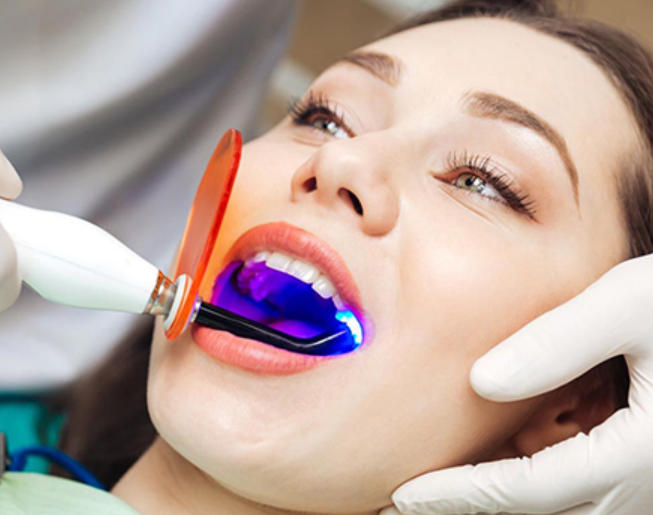How does dental beauty contouring work?
An individual’s smile can be improved with dental contouring. If you look at the mouths of several celebrities, you may have noticed how great they look, and it’s not just the bright white color that impresses, but the flawless alignment, with no misalignment or unevenness between the teeth, and the treatment that today we will tell you that focuses on the smile.
In tooth contouring, irregularities in the appearance of each tooth are removed. As a result, the front teeth are aligned properly. Our next section will introduce you to other benefits it offers and how it works.

How does dental beauty contouring work?
The edges of most people’s teeth have small irregularities. This is a normal condition of the tooth anatomy that does not affect the mouth’s function or health. Beauty, however, can be affected by it.
The appearance of one’s teeth is very important to some people. A beautiful and perfect smile can be achieved by eliminating these minor defects. In order to achieve this, cosmetic dental contouring has been developed.
In order to achieve the desired appearance, the dentist makes minor adjustments to the teeth’s edges. A tooth’s length, shape, and surface are all shaped and finely modified.
In this procedure, minor defects such as irregular incisal lines, pointed teeth, or long teeth are corrected. Additionally, all the teeth are uniformly shaped. The process itself is quick, simple, and painless. Only teeth with minimal cosmetic needs are treated with it.
Permanent results are obtained. As a result, they require high technical accuracy during execution. Corrections cannot be made after they have been made.
Dental cosmetic contouring benefits
Simple and uncomplicated dental beauty contouring can help you achieve a harmonious smile. The following are its main advantages:
A single session is required for this procedure.
The treatment is painless and sensitivity-free. After the procedure, there is usually no discomfort.
As this procedure works on the most superficial layer of the tooth, there is no need to use anesthesia.
Minor enamel wear is done without affecting the health or function of the element.
There is no need for special follow-up care.
As a result, the patient’s self-esteem and confidence are improved.
Eliminates irregularities that contribute to the accumulation of bacterial plaque, which facilitates oral hygiene.
It is relatively inexpensive compared to other beauty treatments.
The results are permanent.

What is dental beauty contouring?
The cosmetic procedure of tooth contouring is quick, simple, and painless. The implementation can be divided into the following steps.
1. Diagnosis
Taking action requires a thorough examination of the patient’s mouth and teeth before taking any action. Oral examination and X-ray photography can be used to determine the health of the teeth and the cosmetic needs of the case. Additionally, the patient’s goals are taken into account.
2. Planning
Once the dentist and patient determine the need and possibility of cosmetic contouring, the dentist and patient decide where the contouring will take place. In this stage, the results that can be obtained are presented to the patient for approval and to avoid misunderstandings.
3. Taking care of the most visible defects and irregularities by polishing
Programmable grinding/contouring is done with high precision rotary tools. Gradually, the enamel is polished to achieve the desired shape.
Corrections are made for exaggerated tips, protruding surfaces, and irregular or uneven edges. There is no need for anesthesia since it works on the most superficial part of the tooth.
4. Results evaluation
Following the correction of the most significant defects, the results are analyzed with the patient. It is determined whether more work needs to be done or if the desired goals have been achieved.
5. A diamond paste is used to polish the pieces to improve their finish. Enhances the appearance of the tooth surface and restores its natural radiance.
Dental contouring contraindications
You should not undergo cosmetic dental contouring if you have weak teeth, fillings or restorations, or if you have hypersensitivity. In addition, it is not recommended for patients with cancer, diabetes, or osteoporosis.
It is also important to consider the person’s age, since the treatment is only for adults. A person must have all their permanent teeth, as well as solid bone tissue.
The jaws must be fully developed and developed. Blockage problems may arise in the future if this is not addressed.
When the braces are removed from a patient wearing orthodontics, tooth contouring should be performed. Following the correction of malocclusions and structural problems of the mouth, cosmetic treatments can be performed.
In addition, it is not recommended in the following situations:
Too short teeth.
Teeth that have lost a lot of tissue as a result of grinding and other harmful habits.
Tooth crowding or dental abnormalities. It is necessary to undergo orthodontic treatment in this case.
Teeth that are very stained
After dental cosmetic contouring, here are some recommendations to consider
In the aftermath of cosmetic dental contouring, the patient can immediately resume normal activities. To maintain the results, experts recommend some care tips.
Hard foods can damage the surface of the treated tooth, so avoid eating them.
Fizzy drinks and fizzy drinks should be avoided.
Hard objects, such as nails, should not be chewed.
For sensitive teeth, use toothpaste containing fluoride.
Maintain proper oral hygiene. You should brush three times a day and use dental floss and mouthwash as well.
Monitor the progress of the procedure and detect any problems early by attending scheduled dental examinations.
Smoking should be avoided.
The aesthetic results of this intervention can be maintained through proper oral and dental hygiene and good eating habits.


